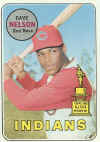In going through all the sections of my website during this offseason, I ran across the old “Turn Back the Ranger Clock” section. It was a series of articles written by Jeremy Northrip for my website. There were two sections in it. One being “Ranger Player from the Past”, and the other being “Worst / Best Trades in Team History”.
He did these during the 2000 season, and got into January of 2001, and then disappeared, unfortunately. It was a good series, and I never found out what happened to him. He completed the 5th through 2nd worst trades in history before he stopped. The worst trade (in his opinion) never was published, and he never got the best trades in history. I’ve contemplated picking up the series a few times over the years, but I don’t know enough about the 70’s & 80’s Rangers to make a guess in regards to trades back then – I didn’t start following the Rangers until the early 90’s.
One thing I will add on my own, is that the #1 Worst Free Agent signing in team history has to be Chan Ho Park. I have no idea how anything could be considered any worse than that.
I’ve preserved the articles in here so you can look at them. Check out the menus on the side and click on the “Turn Back the Clock” category to see all of them. Jeremy, if you’re still out there, and see this, I’d love to continue the series, if you’re interested!
Worst Trades in Team History: 2nd Worst
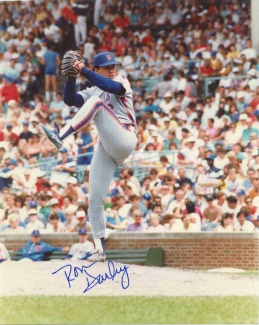 On April 1st, 1982, the Rangers continued their streak of giving up young talent for players that would eventually turn out to be busts. On this date, the Rangers sent Ron Darling and Walt Terrell to the Mets for outfielder Lee Mazzilli. At the time of the trade, Terrell and Darling were both in the Rangers farm system and were considered decent pitching prospects. In fact, Darling was the Rangers first pick in the June 1981 draft. Mazzilli was a guy who had fallen far below all of the Mets expectations and was in the middle of back and shoulder problems. This trade didn’t make sense for the Rangers at the time, nor does it make any sense now.
On April 1st, 1982, the Rangers continued their streak of giving up young talent for players that would eventually turn out to be busts. On this date, the Rangers sent Ron Darling and Walt Terrell to the Mets for outfielder Lee Mazzilli. At the time of the trade, Terrell and Darling were both in the Rangers farm system and were considered decent pitching prospects. In fact, Darling was the Rangers first pick in the June 1981 draft. Mazzilli was a guy who had fallen far below all of the Mets expectations and was in the middle of back and shoulder problems. This trade didn’t make sense for the Rangers at the time, nor does it make any sense now.
Darling wouldn’t make his impact until 1984, when he would post a 12-9 record pitching along side rookie Dwight Gooden. Darling made the All-Star team 1985 and finished 16-6. He would also go on to throw two complete games in the 1986 World Series while posting a 1.53 ERA in his two starts. Darling spent a lot of the 1987 season on the DL and never quite looked the same again. Although, he did come back in 1988 and win 17 games, he didn’t seem like the same pitcher. Darling isn’t listed in any of the Mets record books but from 1984-1986, Darling went 43-21. During this same time period, the Rangers were in desperate need of pitching. Including 1986, when the finished in 2nd place, 5 games behind the Royals. Darling might have made a big difference on a pitching staff that finished 9th out of 14 teams in the AL.
Walt Terrell turned out to be a consistent, durable starter. Walt won 15 or more games three times in his career and pitched over 200 innings each year after 1984. Terrell was often the victim of poor offensive support, but he always gave his team everything that he had. Terrell thrived after he was traded to the Tigers. He posted a career 32-7 record at Tiger Stadium.
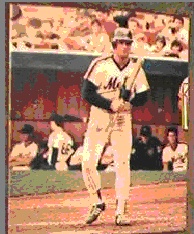 Early in his career, Mazzilli was being compared to the earlier New York centerfield trio of Mantle, Mays and Snider. Mazzilli was a Brooklyn native and was heavily promoted as not only a prospect, but as a sex symbol. His career was off to a decent start until he was moved to 1B in 1980. He struggled through the 1981 season, hitting only .228 while experiencing back and shoulder problems. After the trade to the Rangers, he spent only 4 months on the roster before being traded to the Yankees. During this 4 month stint with Texas, he spent 6 weeks on the DL with shoulder and wrist problems.
Early in his career, Mazzilli was being compared to the earlier New York centerfield trio of Mantle, Mays and Snider. Mazzilli was a Brooklyn native and was heavily promoted as not only a prospect, but as a sex symbol. His career was off to a decent start until he was moved to 1B in 1980. He struggled through the 1981 season, hitting only .228 while experiencing back and shoulder problems. After the trade to the Rangers, he spent only 4 months on the roster before being traded to the Yankees. During this 4 month stint with Texas, he spent 6 weeks on the DL with shoulder and wrist problems.
Now I understand that we are not talking about two of the greatest pitchers of all time here, but combined, they could have really made things different for the Rangers in 1986. Try to imagine a starting rotation that had Darling in place of Jose Guzman and his 15 losses. Imagine Walt Terrell pitching in place of Mike Mason who pitched in only 135 innings. The Rangers already had three decent pitchers in the rotation in Charlie Hough, Edwin Correa and Bobby Witt. Maybe Darling and Terrell help make up those 5 games? I do know that I would much rather have seen them try, rather than witness Mazzilli play only 58 games in a Ranger uniform.
Click here to see Ron Darling’s lifetime stats.
Click here to see Lee Mazzilli’s lifetime stats.
Remember the Rangers!
Jeremy Northrip
rangerhistory@hotmail.com
Note: I apologize for the length in time between articles. I took some time off, but plan on making this a regular thing throughout the season. I am going to submit my articles in separately from now on. In a few days, check back for the Player from the Rangers Past. Then a few days after that, I will follow up with the worst trade in Ranger history. Be sure to drop me a line if you have any ideas for a new topic.
Ron Darling with the Expos & A’s:
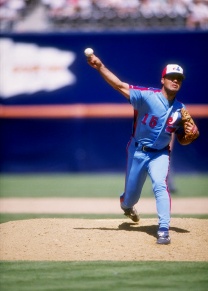
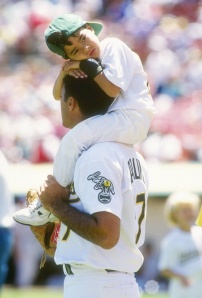
Lee Mazzilli:
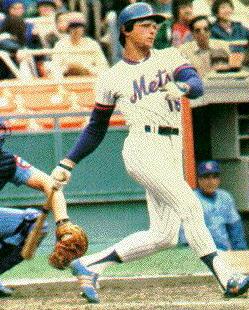
Ranger Player from the Past: Pete Incaviglia
Pete Incaviglia will not be elected into the Hall of Fame any time soon, nor will he be remembered as one of the greatest Rangers to ever don a blue cap. One thing about “Inky” is for certain; every Ranger fan definitely has feelings for him. As a Ranger fan, you either loved him or you loathed him. It was amazing to me to see how fans reacted to “Inky’s” play. Two fans could be watching the same play and both fans see totally opposite things. Picture two fans witnessing “Inky” slam into the outfield wall while trying to make a catch. He falls backwards, and does two back somersaults. Inky is lying in a cloud of dust while the ball is rolling around on the grass. One fan calls “Inky” a worthless klutz while the other fan is praising Inky for his hustle. Either way, you can’t deny the mark that Pete Incaviglia left at Arlington Stadium.
Incaviglia was a story before he even played in his first game as a Ranger. He came out of college very highly touted after winning the 1985 Baseball Americas Player of the Year award while playing at Oklahoma State. The Montreal Expos drafted him in the 1st round, but he refused to play for them. Incaviglia actually demanded a trade to the Rangers. The Rangers were interested and traded 2 players to the Expos for Inky. He lived up to the hype during Spring Training in 1986. In a batting practice session, Pete actually hit a ball through the outfield wall…360 feet from home plate.
The Rangers were so impressed with Incaviglia, that he won a spot on the Opening Day roster, skipping the Minor Leagues entirely. He became one of the very few players in history to jump straight from college to the pros. He delivered too, hitting 30 homers in 1986, his rookie year. His defense left a lot to be desired and he swung at anything and everything, striking out 185 times in 1986. The Rangers wrote it off to the fact that Pete was a rookie and worked diligently with Inky in the off-season to try and improve these areas.
His strikeout totals did begin to fall, but they were just still too high. His BA slowly declined and his OF play was flat embarrassing at times. He never lost his power, but he was nothing more than a one-dimensional player. It was hard not to like Inky though. After watching him flail at a curveball in the dirt, he would go into the field and dive face first across the OF grass in an attempt to get to a fly ball. And who can forget Inky’s face first slide into the bag?
Eventually the Rangers had to let him go. Pete bounced around the league. He served time with the Tigers, Phillies, Astros, Orioles, and Phillies. His love of the game even took him to Japan and Mexico. His career should have ended in 1994 when he crashed into an OF wall while playing for the Phillies. He severely injured his shoulder, but he played through the pain for 4 more years until opting for surgery. His shoulder problems clearly were effecting his play. Pete will always be remembered as a Ranger, albeit good or bad. But one thing is certain, when he retired; he was tied for 8th place on the Rangers career HR list. He was, and still is, tied with fan favorite Toby Harrah with 124 dingers. No one can take that away from him.
Pete attempted a comeback in 1999 in Spring Training with the AZ Diamondbacks, but asked to be released before the season started, and retired for good. Here’s a story about that retirement.
Click here to see Pete’s lifetime stats.
Remember the Rangers!
Jeremy Northrip
rangerhistory@hotmail.com
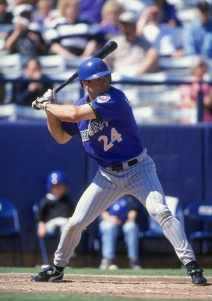
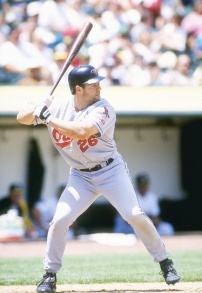
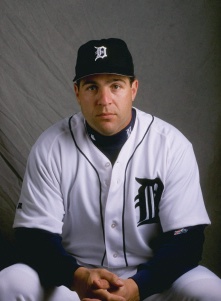
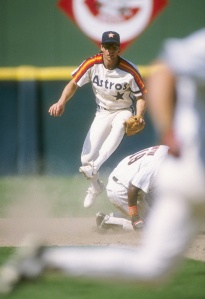

Ranger Player from the Past: Jim Kern
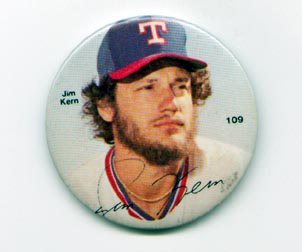 Jim Kern played in the Major leagues for thirteen seasons. He only spent three of those seasons with the Rangers, yet he is one of the most memorable players in franchise history. He stood at 6’5†and was well known for his eccentric, intelligent behavior. He was also widely known for being a prankster. Kern was called “Emu†by his teammates because he looked and acted like a big bird. He kept his teammates and the fans on their toes throughout every game. All of this aside, Jim was a very effective reliever as well.
Jim Kern played in the Major leagues for thirteen seasons. He only spent three of those seasons with the Rangers, yet he is one of the most memorable players in franchise history. He stood at 6’5†and was well known for his eccentric, intelligent behavior. He was also widely known for being a prankster. Kern was called “Emu†by his teammates because he looked and acted like a big bird. He kept his teammates and the fans on their toes throughout every game. All of this aside, Jim was a very effective reliever as well.
Kern came to the Rangers in 1979 and enjoyed the best season of his career. He had an overpowering fastball and a lunatic reputation that made him an intimidating short reliever. The Rangers used Kern in 99 games during the 1979 season and he responded with a 13-5 record, a 1.57 ERA with 29 saves and 136 k’s in 143 innings. Jim and Sparky Lyle were both in the Rangers bullpen from 1979-1980 and they were known as “Craziness, Inc.†for their antics, both, on and off-the-field. During a game at Arlington Stadium in 1980, Kern was hit in the mouth with a throw from his catcher, Jim Sundberg, while watching a foul ball. Kern fell flat on his back and suffered a concussion and had a touch of temporary amnesia.
Kern was recognized for his brilliant season in 1979 by winning Fireman of the Year co-honors with Mike Marshall. Kern suffered an elbow injury in 1980 and was never the same again. He went on to appear in a total of 86 games for the Rangers during the 1980-1981 seasons. His record during this time period was 4-13, his ERA was 4.15 and he only recorded eight saves. He then bounced from the White Sox, Reds, Brewers, Phillies and Indians over the last five year of his career.
Kern’s trademark was his scraggly beard that hung down past his collar. This became as much a part of Jim as his rising fastball. In 1982, he was traded from the White Sox to the Reds and was forced to shave his beard so that he would conform to the Reds “no facial hair†rule. Kern was so unhappy in Cincinnati that he forced the Reds to trade him by regrowing his infamous beard.
When you scan the Rangers record book, you won’t find Jim Kern’s name anywhere. In fact, if you asked the casual fan what team that Kern played for, they would more than likely answer, “The Indians.†Jim’s remarkable season in 1979, and his eccentric personality will be remembered by Rangers fans for years to come.
Click here to see Jim’s lifetime stats.
Remember the Rangers!
Jeremy Northrip
rangerhistory@hotmail.com
Worst Trades in Team History: 3rd Worst
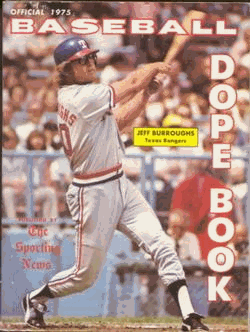 On December 9th, 1976, the Rangers traded Jeff Burroughs (OF) to the Atlanta Braves for Roger Moret (P), Carl Morton (P), Adrian Devine (P), Ken Henderson (OF) and Dave May (OF). If you thought that the Rangers received little in return for the Righetti trade, they traded away one of their first stars for literally nothing in return.
On December 9th, 1976, the Rangers traded Jeff Burroughs (OF) to the Atlanta Braves for Roger Moret (P), Carl Morton (P), Adrian Devine (P), Ken Henderson (OF) and Dave May (OF). If you thought that the Rangers received little in return for the Righetti trade, they traded away one of their first stars for literally nothing in return.
Burroughs came to the Rangers with the Senators and was the nation’s first draft pick in 1969. He first came up with the Senators at age 19, and often clashed with manager Ted Williams, though Burroughs later credited Williams for teaching him to concentrate. In 1973, in his first season as the Rangers starting right fielder, Burroughs hit 30 homers and was immediately thought of as one of the premier young power hitters in the game. Burroughs followed that up by hitting .301 with 25 homers and a league-leading 118 RBI in 1974, he also won AL MVP that year. Burroughs often complained about the south wind at Arlington Stadium and he continued to strike out at a torrid pace. The Rangers felt that they could spare him. In his first year after the trade, Burroughs hit 41 homers with 114 RBI with the Braves.
Roger Moret was the “big-gun” in this trade and he played for the Rangers for 1 ½ years, going 3-4 in 25 games. The sidearming Moret’s aim for the strike zone was erratic as his personality, but when he had control of both he was a capable winner. Moret was coming off of a 14-3 season at the time of the trade, and the Rangers were looking to see more of that.
Carl Morton won the NL rookie of the Year award in 1970 for the Expos, he was never quite the same again. In fact, at the time of the trade, Morton was pitching in the minors. I don’t know if the Rangers were thinking that he would return to his form from 6 years earlier, but if they were, it was quite a stretch. Morton never played in the Majors again and died at age 39 of a heart attack after jogging.
Adrian Devine was actually a nice surprise out of this deal. He came off arm surgery in 1975 and rebounded to go 11-6 with a 3.58 ERA and 15 saves in 1977. Devine then returned to Atlanta in 1978, was then traded back to Texas in 1979 in a very complicated deal. Arm troubles were his demise in 1980.
The Rangers were looking at getting a superstar out of Ken Henderson when they made this deal. Ken was touted as Willie Mays successor when Henderson was only 19. Henderson only played in 75 games in 1977 and was then traded to Cincinnati. In those 75 games, he hit only 5 HR and 23 RBI.
Dave May also managed to stay with the Rangers for the entire 1977 season. Not that this was a good thing, May hit .241 with 7 HR and 42 RBI. May had showed some promise earlier in his career. In 1973, he hit 25 HR, 93 RBI and a .303 average. In a part-time role with the Braves in 1975, he hit 12 HR in only 203 AB”s. He dropped off again in 1976, thus prompting the Braves to trade him.
This trade boils down to one thing, the Rangers took players that they were either hoping would develop, or return to form from a few seasons back. They traded one of the best, young power hitters in the game for these guys, and not one of them panned out. Now, if Ken Henderson went on to star for the Rangers for 10 years, would I be writing this article? No way, but the fact is, the franchise took five separate chances when they made this deal, and not one of them worked out.
Remember the Rangers!
Jeremy Northrip
rangerhistory@hotmail.com
Ranger Player from the Past: Buddy Bell
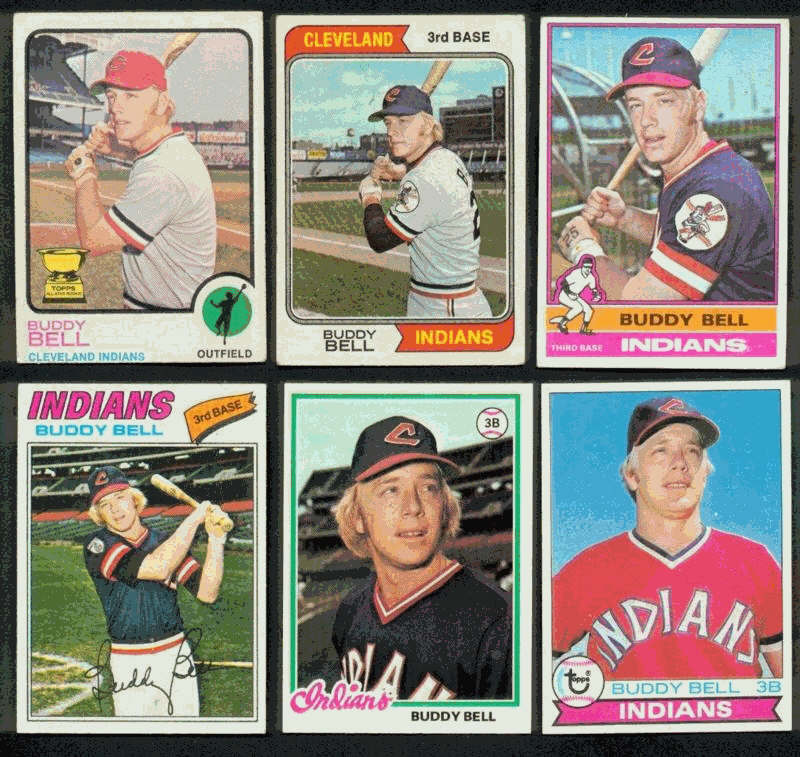 Bell could do it all. In the field, he was a sure-handed third basemen with enough range to play SS when needed and he won six straight Gold Gloves. At the plate, he was a clutch hitter who had one of the best hitter’s eyes in the league.
Bell could do it all. In the field, he was a sure-handed third basemen with enough range to play SS when needed and he won six straight Gold Gloves. At the plate, he was a clutch hitter who had one of the best hitter’s eyes in the league.
The Indians traded Bell to Texas in December of 1978 for Toby Harrah. Bell had already established himself as one of the best third basemen in the game, but when he came to Texas, he responded with his best year to that point in 1979. He won his first gold glove that year while hitting .299 with 18 HR and 101 RBI, he also led the league in game-winning RBI with 16. Bell was never much of a pure power hitter. I liken his swing and approach to the plate of Rusty Greer. Bell was a line-drive hitter. Hie line-drive hitting eventually carried him to rank first among all Rangers in career doubles, RBI, extra-base hits, and total bases.
Bell started at third for the Rangers for seven seasons. When 1985 rolled around, Bell started the season slowly and felt that it was time to go in a new direction at third. They traded Bell to the Reds and gave the starting third base job to prospect, Steve Buechele.
 The most amazing thing about Bell is that he achieved all of this despite being an epileptic. He suffered from seizures during his early years, and decided to seek medical help after he fell out of a golf cart and broke his nose in 1976. Doctor’s initially thought that a brain tumor might have caused the collapse, but later diagnosed him as epileptic; thanks to medication, he has never had a seizure on the field.
The most amazing thing about Bell is that he achieved all of this despite being an epileptic. He suffered from seizures during his early years, and decided to seek medical help after he fell out of a golf cart and broke his nose in 1976. Doctor’s initially thought that a brain tumor might have caused the collapse, but later diagnosed him as epileptic; thanks to medication, he has never had a seizure on the field.
Since his retirement, Bell has gone on to manage for the Tigers and the Rockies. Bell and his father (Gus) are also 2nd all-time in father-son total homers with 407. Bell has also had three sons play pro ball. Bell goes down as one of the greatest Rangers ever any way that you look at it.
Click here to see Buddy Bell’s lifetime stats. Here’s some more pictures of Buddy Bell – you can click on any of them to see a larger version.
Remember the Rangers!
Jeremy Northrip
rangerhistory@hotmail.com
Worst Trades in Team History: 4th Worst
On November 10th, 1978, the Rangers made one of the most embarrassing trades in the history of the game. They sent Dave Righetti (P), Juan Beniquez (OF), Mike Griffin (P), Paul Mirabella (P) and Greg Jamison (OF) to the Yankees for Sparky Lyle (P), Domingo Ramos (INF), Mike Heath (C), Dave Rajsich (P), and Larry McCall (P). Essentially, this was a Righetti and Beniquez for Lyle trade. The problem with this trade is that the Rangers gave up one of the game’s best closers in the 1980’s for a list of players that would all be gone two years later.
At the time of the trade, the Rangers were a team that was very close to being a contender and they thought that they lacked a true closer. Righetti was being groomed to be a starter and Sparky Lyle was one of the best relievers for over a decade with the Red Sox and the Yankees. In 1977, Lyle became the first reliever to win the AL Cy Young. In the Spring of 1978, however, Lyle was feuding with Yankee management, irked over owner George Steinbrenner’s decision to sign relief aces Rich Gossage and Rawley Eastwick as free agents. Lyle was a wise-cracking lefthander with a sizable paunch visible beneath his uniform, Lyle relied on a crackling slider almost exclusively in his heyday. By the time he came to the Rangers, his slider had lost its snap and he only saved 21 games for the Rangers in 1 ½ seasons before being traded to the Phillies in 1980.
Meanwhile, Righetti is busy winning AL Rookie of the Year in 1981, and pitching a no-hitter on July 4th, 1983 against Boston. He wasn’t moved to the bullpen until 1984. In his first year as a closer, he went on to save 31 games. Righetti would pitch in 522 games breaking Whitey Ford’s Yankee record. He would also finish as the Yanks career saves record-holder with 224.
Juan Beniquez was very versatile and dependable off of the bench for the Yankees and fared better as a hitter late in his career (after the Rangers traded him). Juan hit over .300 for four straight seasons (1983-86). Mike Griffin was a huge prospect and was the Yankees best rookie in the Spring of 1980, then went 2-4 and was sent down. Griffin pitched for seven different organizations without a full or winning season in the majors. Paul Mirabella was the Rangers first round (seventh overall) pick in the 1976 June Free Agent Draft. Mirabella spent a decade of shuttling between the minors and majors, he finally stuck in the Brewers bullpen in 1988. Greg Jamison never played in the majors.
The Rangers did not benefit from one player in this deal. We have already discussed Lyle. Domingo Ramos never played for the Rangers and spent 8 full seasons in the minors before latching on with the Mariners in 1982. Ramos ended up being a career .234 hitter. Mike Heath also never played for the Rangers. Heath started the 1979 season in the minors and the Rangers traded him to the A’s where he went on the be a valuable reserve for the rest of his career. Dave Rajsich was a 6’5″ forkballer who was used mostly in long relief, Rajsich stayed with the Rangers the longest of anyone that they received in this deal, going 3-3 in two years. Larry McCall never played for the Rangers, in fact, he only pitched in two big league games and was never heard from again.
This trade was definitely one of the low-points in this franchise’s history. I have studied this trade from every angle to try and find something good for the Rangers and there is nothing. This trade did absolutely nothing to benefit the Rangers. They basically gave away one of the best closers in the 1980’s and got close to nothing in return. It’s hard to imagine any trade being worse than this one, but I still have three more to report J.


Make sure to check back next week when I will be discussing the 3rd worst trade in team history and will also have another “Blast from the Rangers Pastâ€. If you have any questions, comments or suggestions, please E-mail me.
Remember the Rangers!
Jeremy Northrip
rangerhistory@hotmail.com
Ranger Player from the Past: Charlie Hough
 It’s hard to mention any player from the Rangers past and not think of Charlie Hough. Hough pitched for the Rangers for 11 seasons (1980-1990). He never put up Cy Young numbers, but he was a consistent winner who reached double-figures in victories nine consecutive season. Not only was Hough one of the most likeable players in franchise history, he was also one of the most unique.
It’s hard to mention any player from the Rangers past and not think of Charlie Hough. Hough pitched for the Rangers for 11 seasons (1980-1990). He never put up Cy Young numbers, but he was a consistent winner who reached double-figures in victories nine consecutive season. Not only was Hough one of the most likeable players in franchise history, he was also one of the most unique.
Hough started with the Dodgers in 1970 and was originally signed as a third baseman. He learned to throw the knuckle ball from Los Angeles scout Goldie Hold, with help from Hoyt Wilhelm, Jim Brewer and Tommy Lasorda. While Hough was with the Dodgers, he was used almost strictly as a middle-innings reliever. He only started one game from 1970 to 1978.
The Rangers purchased Charlie’s contract from the Dodgers during the 1980 season. In 1982, the club decided to move Hough into the starting rotation, and they were very surprised by the results. Hough won 16 games that year and began a streak of seven consecutive seasons leading the club in wins. In fact, the knuckleballer led Texas in complete games and innings pitched each year from 1982 to 1987. During this same time period, Hough won a higher percentage of his club’s victories than any other major league hurler.
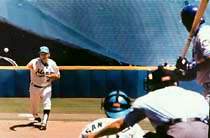 Hough was also a notorious smoker, he was often spotted smoking in the dugout between innings, even when he was the starting pitcher! (Hough had to smoke in the clubhouse when MLB made it against the rules to smoke in the dugout in the mid-80’s.) Hough could go to the mound and throw 2 innings of perfect baseball. He would have the batters swinging out of their shoes and then, one pitch later, he would look like he had never thrown a knuckle ball before. His knuckleball turned into a 50 MPH hanging curve ball that was usually deposited into the outfield bleachers, about 450 feet away, he would then come back and look perfect for two more innings. Charlie’s philosophy was that if somebody hit one knuckler 500 feet, throw the next one the same way because it will do something different. “You’re not in charge of what it does,” says Charlie, “you’re only in charge of letting it go.” This reasoning is one of the major reasons that Hough was so successful throwing the knuckle ball.
Hough was also a notorious smoker, he was often spotted smoking in the dugout between innings, even when he was the starting pitcher! (Hough had to smoke in the clubhouse when MLB made it against the rules to smoke in the dugout in the mid-80’s.) Hough could go to the mound and throw 2 innings of perfect baseball. He would have the batters swinging out of their shoes and then, one pitch later, he would look like he had never thrown a knuckle ball before. His knuckleball turned into a 50 MPH hanging curve ball that was usually deposited into the outfield bleachers, about 450 feet away, he would then come back and look perfect for two more innings. Charlie’s philosophy was that if somebody hit one knuckler 500 feet, throw the next one the same way because it will do something different. “You’re not in charge of what it does,” says Charlie, “you’re only in charge of letting it go.” This reasoning is one of the major reasons that Hough was so successful throwing the knuckle ball.
When Hough finally left the franchise in 1990, he had rewritten the Rangers record book. He became the all time leader in wins, innings pitched, strikeouts, games pitched, losses, and walks. In 1995, The Sporting News named Hough the greatest pitcher in Ranger history. Hough finished his career with the Marlins, and it is only appropriate that he go down in Marlin history as well. Hough was one of the first two free agents signed by the Marlins and won the first game in Marlins history against the Dodgers on April 5, 1993.
Click here to see Charlie Hough’s lifetime stats. Here’s some more pictures of Charlie Hough – you can click on any of them to see a larger version.
Remember the Rangers!
Jeremy Northrip
rangerhistory@hotmail.com
Worst Trades in Team History: Intro & 5th worst
Hello, and welcome to the first installment of Ranger History. I am Jeremy, and Joe has been gracious enough to make this a regular gig for me. I hope that you all enjoy this edition to this wonderful site. I plan on talking about a whole array of things here and have many things in mind to get you through this horrid season and into next year. I hope to have this section of the website updated at least once a week, maybe twice. At this time, Joe and I have quite a few things in mind for this section. I hope that you all tune in daily to catch any updates that occur to this section of the site. One thing that will be a constant in all of articles will be the Player from the Rangers Past. This is where I will bring up a Ranger from yesteryear, and hopefully, provide some insight on these players.
In today’s installment, I plan on starting the first in a 10 part series. I am going to break down the 5 worst and best trades in Ranger history. Today, I will start with the 5th worst exchange since the Senators moved to the old Turnpike Stadium.
On July 13, 1993, the Rangers were in their first year of the Kevin Kennedy administration and were in a heated pennant race with the White Sox. The Rangers seemed to be held back on a continual basis by their horrid bullpen. Players such as Brian Bohanon, Mike Schooler, Craig Lefferts, Matt Whiteside, Bob Patterson, Jeff Bronkey and Todd Burns all made regular relief appearances for the Rangers at this time. The Rangers had a pretty decent starting staff at this time with Kenny Rogers, Kevin Brown, Roger Pavlik, Charlie Leibrandt and Nolan Ryan (before injuring his hip). Kennedy was becoming very frustrated with the gap that he had from his starters to Tom Henke (the closer at the time). The Rangers felt that it was imperative that they upgraded their bullpen if they were going to make any kind of stretch run for the AL West crown.
So on July 13th, the Rangers sent Robb Nen and Kurt Miller to the Marlins for Chris Carpenter. At the time of the trade Miller was in the minors, Nen was a rookie starter who was brought up to take Ryan’s place in the rotation, he battled a groin injury and was sent back down after posting a 6.35 ERA. Carpenter was a 28 year old reliever with a 2.89 ERA for the Marlins. The Rangers praised themselves for this trade. Nen had never showed the Rangers much in the minors as a starting pitcher, he was 13-22 with a 4.69 ERA. Miller was a throw in and Carpenter was going to come in and provide an immediate band aid to the bull-pen woes.
Carpenter was still the best gap between the starters and Henke when he joined the club. In fact, the Rangers used him in 27 games over the 2 and a half months that he was with the team. Chris still wasn’t what the Rangers were hoping. His ERA with the Rangers was 4.22 (1.33 higher than with the Marlins) and he allowed more than 13 runners per nine innings pitched (3 runners more than with the Marlins) The Rangers finished the season at 86-76, 8 games behind the White Sox.
Miller was a non-factor in this trade. He made only 44 appearances in the Majors and posted a 2-7 record with an ERA over 7.00 with the Cubs and Marlins. The Marlins began to experiment with Nen as a closer in 1994, and he saved 15 games that year with a 2.95 ERA. From 1995 to the present day, Nen has been one of the best closers in the game. Since the trade, he has posted over 200 saves and an ERA of 3.15. Carpenter returned to the Rangers in 1994 and appeared in a team high 47 games, posting a 5.03 ERA. He then left the club after the strike shortened season and resurfaced with the Brewers, briefly, in 1996.
The bottom line is, the Rangers dealt one of the three or four best closers in the 90’s for a middle reliever that went 6-6 in 74 ballgames with the club. The Rangers didn’t even have a championship to show for it. Can you imagine what might have happened if the Rangers had Robb Nen in their pen during the 96 playoffs? Many people have said that if the Rangers had Wetteland in ’96, they win the World Series. I don’t know if having Nenn on the roster in ’96 guarantees a WS title, but I do believe that they get past the Yankees.
Remember the Rangers!
Jeremy Northrip
rangerhistory@hotmail.com
Ranger Player from the Past: Dave Nelson
 I have so many players that I cannot wait to discuss in this section, I had a difficult time choosing which one to talk about today. I narrowed it down to one of my favorite Rangers of all time, and one of the least talked about. He played 2B for the 2nd place, 1974 ball club and his name was Dave Nelson. Manager Billy Martin called him one of the scrappiest kids that he had ever been around. When a reporter advised Martin that Nelson was 30 years old and far from a “kid”, Martin replied, “He is?”
I have so many players that I cannot wait to discuss in this section, I had a difficult time choosing which one to talk about today. I narrowed it down to one of my favorite Rangers of all time, and one of the least talked about. He played 2B for the 2nd place, 1974 ball club and his name was Dave Nelson. Manager Billy Martin called him one of the scrappiest kids that he had ever been around. When a reporter advised Martin that Nelson was 30 years old and far from a “kid”, Martin replied, “He is?”
Nelson came over with the Senators in ’72 and only played for the Rangers for four years (’72-’75). Despite his lack of history with the club, I would definitely consider him one of the largest over achievers in Ranger history. Nelson loved to run, although he was not the fastest guy in the league, he was the prototypical baserunner. He took pride studying pitchers and testing himself to see when he could get the quickest jump. From ’72-’74, Nelson stole 119 bases for Texas and ranks 4th on the Rangers all time list in stolen bases. His best year with the club was in 1973 when he hit .283 with 7 HR, 48 RBI, 71 runs and 43 SB. In 1974, Nelson broke his nose and never seemed to be the same type of player again.
The greatest day in Nelson’s career was August 30, 1974 (16 years ago today) against the Indians. He was facing Indians pitcher Dick Bosman in the first inning and Nelson singled. He then proceeded to tie a major league record by stealing second, third and home in the same inning. No other Ranger has ever accomplished this feat. If you give me nine players with the same type of heart as Dave Nelson, I promise you that I win the World Series every year, for as long as they are with me.
Thanks for reading and keep checking in for my next entry. I will discuss the 4th worst trade in franchise history and bring up another “Player from the past”. If you have any questions, comments or suggestions, E-mail me. I would be happy to take the feedback and promise to answer all mail.
Click here to see Dave Nelson’s career statistics.
Remember the Rangers!
Jeremy Northrip
rangerhistory@hotmail.com












